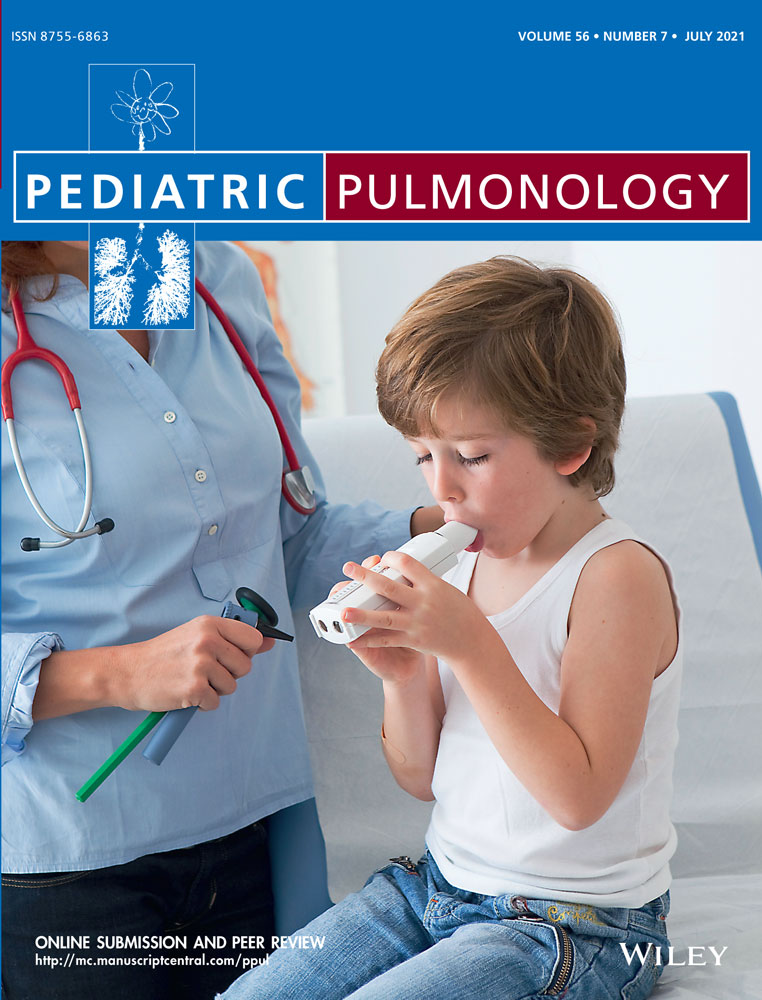Quantifying lung and diaphragm morphology using radiographs in normative pediatric subjects, and predicting CT-derived lung volume
Abstract
Objective
To quantify the effect of age on two-dimensional (2D) radiographic lung and diaphragm morphology and determine if 2D radiographic lung measurements can be used to estimate computer tomography (CT)-derived lung volume in normative pediatric subjects.
Materials and Methods
Digitally reconstructed radiographs (DRRs) were created using retrospective chest CT scans from 77 pediatric male and female subjects aged birth to 19 years. 2D lung and diaphragm measurements were made on the DRRs using custom MATLAB code, and Spearman correlations and exponential regression equations were used to relate 2D measurements with age. In addition, 3D lung volumes were segmented using CT scans, and power regression equations were fitted to predict each lung's CT-derived volume from 2D lung measurements. The coefficient of determination (R2) and standard error of the estimate (SEE) were used to assess the precision of the predictive equations with p < .05 indicating statistical significance.
Results
All 2D radiographic lung and diaphragm measurements showed statistically significant positive correlations with age (p < .01), including lung major axis (Spearman rho ≥ 0.90). Precise estimations of CT-derived lung volumes can be made using 2D lung measurements (R2 ≥ 0.95), including lung major axis (R2 ≥ 0.97).
Interpretations
The reported pediatric age-specific reference data on 2D lung and diaphragm morphology and growth rates could be clinically used to identify lung and diaphragm pathologies during chest X-ray evaluations. The simple, precise, and clinically adaptable radiographic method for estimating CT-derived lung volumes may be used when pulmonary function tests are not readily available or difficult to perform.
CONFLICT OF INTERESTS
The authors declare that there are no conflict of interests.




